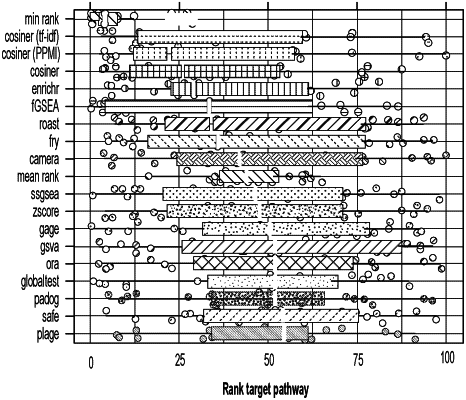| CPC G16H 50/30 (2018.01) [G06F 17/15 (2013.01); G16B 5/00 (2019.02); G16B 20/00 (2019.02); G16B 40/20 (2019.02); G16B 50/20 (2019.02); G16B 50/30 (2019.02)] | 48 Claims |

|
1. A system for identifying a candidate therapy for treatment of a disease, the system comprising:
a processor; and
a memory having instructions stored thereon, wherein the instructions, when executed by the processor, cause the processor to:
(a) identify a first gene set comprising differentially expressed genes of cells indicative of the disease as compared to cells not indicative of the disease, wherein the first gene set is represented as a first numeric vector comprising weighted values corresponding to gene expression data of the differentially expressed genes of the first gene set;
(b) for each of a plurality of candidate therapies causing changes in gene expression of cells:
(i) identify a second gene set corresponding to each of said candidate therapies, wherein the second gene set is represented as a second numeric vector comprising weighted values corresponding to gene expression data of differentially expressed genes of cells treated with said candidate therapy as compared to cells not treated with said candidate therapy; and
(ii) determine a measure of similarity between the first gene set and the second gene set using the first numeric vector and the second numeric vector, wherein the measure of similarity is a function of an angle between the first numeric vector and the second numeric vector; and
(c) identify one or more members of the plurality of candidate therapies as candidates for treatment of the disease using the measures of similarity.
|